Author Photo And Bio
Jim's brief comments are in italic.
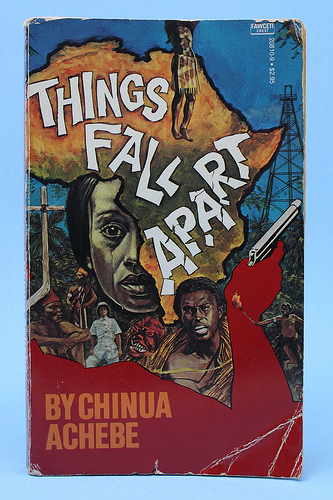 1. Things Fall Apart (for setting the record straight) by Chinua Achebe (1958). Two years before Nigeria won its independence from Britain, Achebe published this clear-eyed novel set in the years leading up to colonial rule. Through the rise and fall of the admirable yet flawed tribal leader, Okonkwo, Achebe reveals the strengths and weaknesses of his nation’s traditional culture: its violence and superstitions, and its compassion, honor, and pride.
1. Things Fall Apart (for setting the record straight) by Chinua Achebe (1958). Two years before Nigeria won its independence from Britain, Achebe published this clear-eyed novel set in the years leading up to colonial rule. Through the rise and fall of the admirable yet flawed tribal leader, Okonkwo, Achebe reveals the strengths and weaknesses of his nation’s traditional culture: its violence and superstitions, and its compassion, honor, and pride.
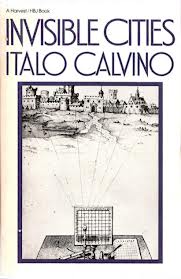 2. Invisible Cities (for his celebration of lying) by Italo Calvino (1972). Fearing that his empire’s vastness has made it “an endless, formless ruin,” Kublai Khan asks the traveler Marco Polo to describe it to him so he might understand and thereby control it. What Polo offers are accounts of surreal places—“hidden cities,” “trading cities,” and “thin cities” (whose buildings have no walls, floors or ceilings)—inhabited by people whose actions seem inexplicable in this novel of ideas concerned with memory and time, language and community, and the landscapes of the physical world and the imagination.
2. Invisible Cities (for his celebration of lying) by Italo Calvino (1972). Fearing that his empire’s vastness has made it “an endless, formless ruin,” Kublai Khan asks the traveler Marco Polo to describe it to him so he might understand and thereby control it. What Polo offers are accounts of surreal places—“hidden cities,” “trading cities,” and “thin cities” (whose buildings have no walls, floors or ceilings)—inhabited by people whose actions seem inexplicable in this novel of ideas concerned with memory and time, language and community, and the landscapes of the physical world and the imagination.
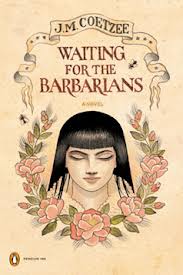 3. Waiting for the Barbarians (for its pessimism) by J. M. Coetzee (1980). A magistrate for an unspecified empire finds himself thrust into a growing conflict on the frontier. Fearing an invasion, the empire sends an army to eliminate the threat of neighboring “barbarians,” and the magistrate, accused of plotting with the enemy, is beaten and jailed. As he suffers these trials, the magistrate reflects on civilization and nature, suffering and oppression, and man’s barbarous tendency toward violence.
3. Waiting for the Barbarians (for its pessimism) by J. M. Coetzee (1980). A magistrate for an unspecified empire finds himself thrust into a growing conflict on the frontier. Fearing an invasion, the empire sends an army to eliminate the threat of neighboring “barbarians,” and the magistrate, accused of plotting with the enemy, is beaten and jailed. As he suffers these trials, the magistrate reflects on civilization and nature, suffering and oppression, and man’s barbarous tendency toward violence.
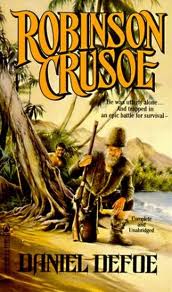 4. Robinson Crusoe (for its optimism) by Daniel Defoe (1719). This rollicking yet existential adventure with deep religious undertones begins with fatherly advice: pursue a stable career. But the wastrel son denies his father because he is tempted by the sea. This salty path gets young Robinson kidnapped by Moorish pirates, sold into slavery, and shipwrecked on a remote island filled with cannibals. Yet this island seems an Eden to Crusoe, whose ingenuity enables him to tame the land, conquer the natives, and save the life of an islander, whom he makes his servant and christens Man Friday, as he comes to recognize and accept God’s will.
4. Robinson Crusoe (for its optimism) by Daniel Defoe (1719). This rollicking yet existential adventure with deep religious undertones begins with fatherly advice: pursue a stable career. But the wastrel son denies his father because he is tempted by the sea. This salty path gets young Robinson kidnapped by Moorish pirates, sold into slavery, and shipwrecked on a remote island filled with cannibals. Yet this island seems an Eden to Crusoe, whose ingenuity enables him to tame the land, conquer the natives, and save the life of an islander, whom he makes his servant and christens Man Friday, as he comes to recognize and accept God’s will.
 5. Middlemarch (for its insight and wisdom) by George Eliot (1871–72). Dorothea Brooke is a pretty young idealist whose desire to improve the world leads her to marry the crusty pedant Casaubon. This mistake takes her down a circuitous and painful path in search of happiness. The novel, which explores society’s brakes on women and deteriorating rural life, is as much a chronicle of the English town of Middlemarch as it is the portrait of a lady. Eliot excels at parsing moments of moral crisis so that we feel a character’s anguish and resolve. Her intelligent sympathy for even the most unlikable people redirects our own moral compass toward charity rather than enmity.
5. Middlemarch (for its insight and wisdom) by George Eliot (1871–72). Dorothea Brooke is a pretty young idealist whose desire to improve the world leads her to marry the crusty pedant Casaubon. This mistake takes her down a circuitous and painful path in search of happiness. The novel, which explores society’s brakes on women and deteriorating rural life, is as much a chronicle of the English town of Middlemarch as it is the portrait of a lady. Eliot excels at parsing moments of moral crisis so that we feel a character’s anguish and resolve. Her intelligent sympathy for even the most unlikable people redirects our own moral compass toward charity rather than enmity.
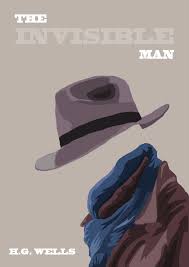 6. Invisible Man (for its call to arms) by Ralph Ellison (1952). This modernist novel follows the bizarre, often surreal adventures of an unnamed narrator, a black man, whose identity becomes a battleground in racially divided America. Expected to be submissive and obedient in the South, he must decipher the often contradictory rules whites set for a black man’s behavior. Traveling north to Harlem, he meets white leaders intent on controlling and manipulating him. Desperate to seize control of his life, he imitates Dostoevsky’s underground man, escaping down a manhole where he vows to remain until he can define himself. The book’s famous last line, “Who knows, but that on the lower frequencies I speak for you,” suggests how it transcends race to tell a universal story of the quest for self-determination.
6. Invisible Man (for its call to arms) by Ralph Ellison (1952). This modernist novel follows the bizarre, often surreal adventures of an unnamed narrator, a black man, whose identity becomes a battleground in racially divided America. Expected to be submissive and obedient in the South, he must decipher the often contradictory rules whites set for a black man’s behavior. Traveling north to Harlem, he meets white leaders intent on controlling and manipulating him. Desperate to seize control of his life, he imitates Dostoevsky’s underground man, escaping down a manhole where he vows to remain until he can define himself. The book’s famous last line, “Who knows, but that on the lower frequencies I speak for you,” suggests how it transcends race to tell a universal story of the quest for self-determination.
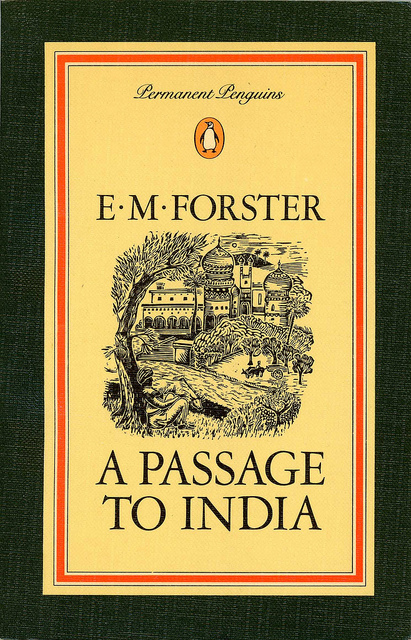 7. A Passage to India (for its symphonic perfection) by E. M. Forster (1924). A handful of English people searching for the “real” India get far more than they bargained for —up to and including a terrifying transcendental experience in a very dark cave. Forster’s novel of the Raj is infused with a generous, liberal humanism; the author writes like a man determined that Indians should populate a novel of India, and he succeeds in this beautifully imagined portrait of both colonizer and colonized.
7. A Passage to India (for its symphonic perfection) by E. M. Forster (1924). A handful of English people searching for the “real” India get far more than they bargained for —up to and including a terrifying transcendental experience in a very dark cave. Forster’s novel of the Raj is infused with a generous, liberal humanism; the author writes like a man determined that Indians should populate a novel of India, and he succeeds in this beautifully imagined portrait of both colonizer and colonized.
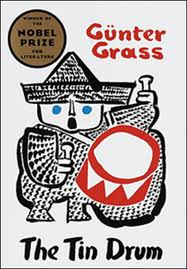 8. The Tin Drum (for its imaginative creativity) by Günter Grass (1959). This picaresque novel depicts the rise of Nazism in Germany and its terrible consequences through the adventures of Oskar Matzerath, “the eternal three-year-old” who stunts his growth at three feet and uses his tin drum and piercing screams as weapons against a mad world. Chilling and absurd, teeming with black comedy and dark insights into the human soul, The Tin Drum is both an artistic triumph and an act of reclamation. As the Swedish Academy observed while presenting Grass with the Nobel Prize for Literature in 1999, the novel “comes to grips with the enormous task of reviewing contemporary history by recalling the disavowed and the forgotten: the victims, losers, and lies that people wanted to forget because they had once believed in them.”
8. The Tin Drum (for its imaginative creativity) by Günter Grass (1959). This picaresque novel depicts the rise of Nazism in Germany and its terrible consequences through the adventures of Oskar Matzerath, “the eternal three-year-old” who stunts his growth at three feet and uses his tin drum and piercing screams as weapons against a mad world. Chilling and absurd, teeming with black comedy and dark insights into the human soul, The Tin Drum is both an artistic triumph and an act of reclamation. As the Swedish Academy observed while presenting Grass with the Nobel Prize for Literature in 1999, the novel “comes to grips with the enormous task of reviewing contemporary history by recalling the disavowed and the forgotten: the victims, losers, and lies that people wanted to forget because they had once believed in them.”
 9. Beloved (for its emotional clarity) by Toni Morrison (1987). It’s a choice no mother should have to make. In 1856, escaped slave Margaret Garner decided to kill her infant daughter rather than return her to slavery. Her desperate act created a national sensation. Where Garner’s true-life drama ends, Beloved begins. In this Pulitzer Prize–winning novel, the murdered child, Beloved, returns from the grave years later to haunt her mother Sethe. Aided by her daughter Denver and lover Paul D, Sethe confronts the all-consuming guilt precipitated by the ghostly embodiment of her dead child. Rendered in poetic language, Beloved is a stunning indictment of slavery “full of baby’s venom.”
9. Beloved (for its emotional clarity) by Toni Morrison (1987). It’s a choice no mother should have to make. In 1856, escaped slave Margaret Garner decided to kill her infant daughter rather than return her to slavery. Her desperate act created a national sensation. Where Garner’s true-life drama ends, Beloved begins. In this Pulitzer Prize–winning novel, the murdered child, Beloved, returns from the grave years later to haunt her mother Sethe. Aided by her daughter Denver and lover Paul D, Sethe confronts the all-consuming guilt precipitated by the ghostly embodiment of her dead child. Rendered in poetic language, Beloved is a stunning indictment of slavery “full of baby’s venom.”
 10. The stories of Flannery O’Connor (for their unerring narrative focus) (1925–64). Full of violence, mordant comedy, and a fierce Catholic vision that is bent on human salvation at any cost, Flannery O’Connor’s stories are like no others. Bigots, intellectual snobs, shyster preachers, and crazed religious seers —a full cavalcade of what critics came to call “grotesques”—careen through her tales, and O’Connor gleefully displays the moral inadequacy of all of them. Twentieth-century short stories often focus on tiny moments, but O’Connor’s stories, with their unswerving eye for vanity and their profound sense of the sacred, feel immense.
10. The stories of Flannery O’Connor (for their unerring narrative focus) (1925–64). Full of violence, mordant comedy, and a fierce Catholic vision that is bent on human salvation at any cost, Flannery O’Connor’s stories are like no others. Bigots, intellectual snobs, shyster preachers, and crazed religious seers —a full cavalcade of what critics came to call “grotesques”—careen through her tales, and O’Connor gleefully displays the moral inadequacy of all of them. Twentieth-century short stories often focus on tiny moments, but O’Connor’s stories, with their unswerving eye for vanity and their profound sense of the sacred, feel immense.